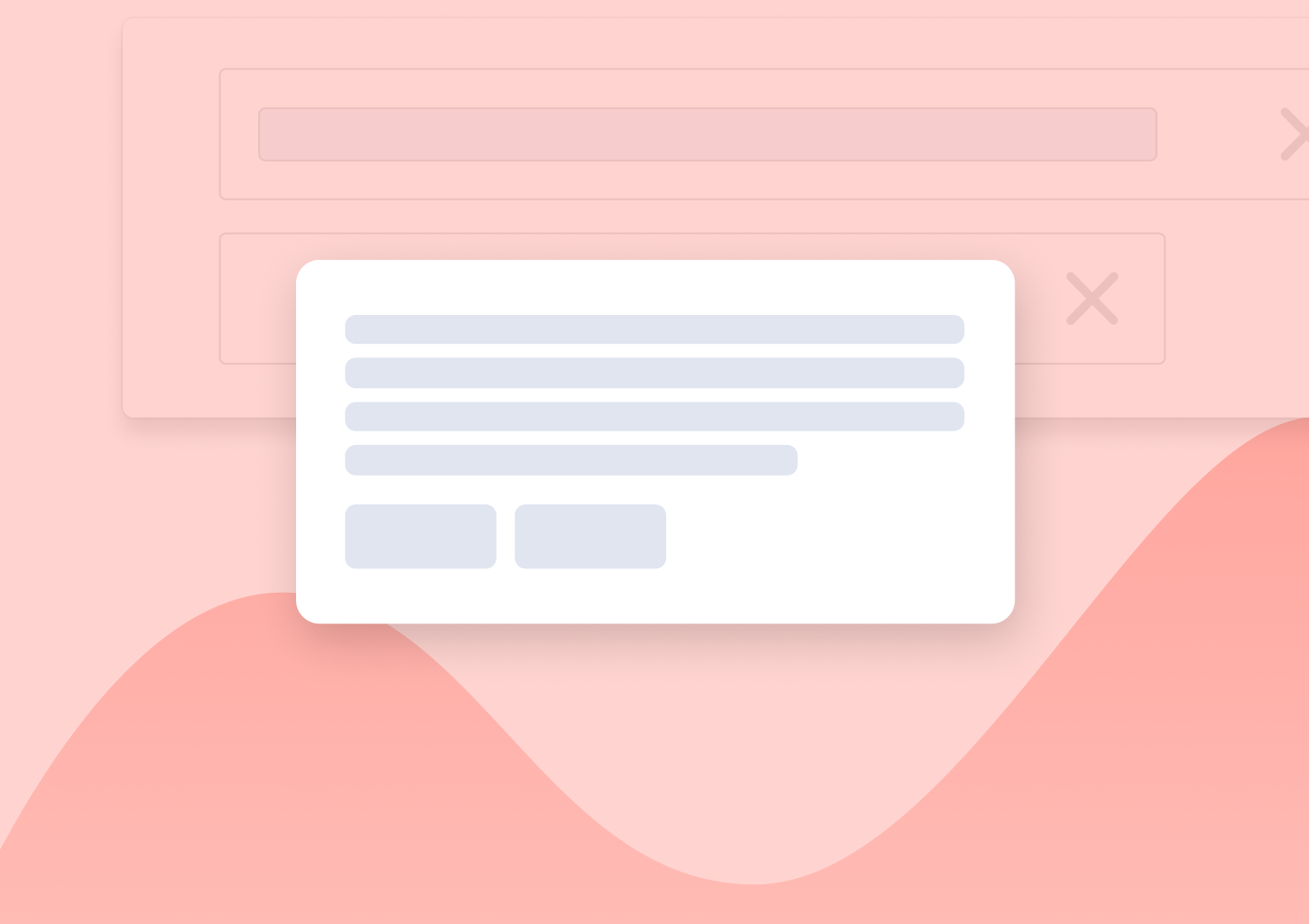10 Questions to Ask in a Product Market Fit Survey
FACT – You can’t start growing your product, at least not successfully, anyway, until you’ve reached the product market fit.
Without it, any growth (or even product development) effort is like shooting in the dark.
Literarily.
But hey, I’m sure you already know this.
What you don’t know is how to figure out that product market fit, right?
Sure, you may have heard of product market fit surveys and several other strategies that help to understand it. But just knowing about them can hardly solve your problem…
For one, you still don’t know what questions to ask to uncover the product market fit.
Luckily, that’s what I’m going to help you with in this guide. We’ll cover some theories regarding product-market fit to ensure that you fully grasp the concept. And then, we’ll go through the top product market fit questions you should be asking.
But let’s start with this…
What’s the big deal with the product market fit?
The concept behind evaluating product market fit is simple – You do it to determine whether your product satisfies the market demand.
In other words, product-market fit defines whether what you’ve created (the product) and what customers need (the market) align.
And by the way, I do realize that at first glance, this concept might sound crazy. How wouldn’t your product align with the market? You’ve built it for them, after all, right?
Well, not necessarily.
Let me illustrate this with a quite common scenario in the startup world.
A founder has an idea. Maybe he woke up with it one day, or it’s been brewing at the back of their mind for some time. It doesn’t matter. They’ve got an idea, and they rush to make it happen. They build an MVP. It’s exactly what they think customers need, so they show it to some people they know. These people seem to like it. So, based on this encouragement, they build the product and launch it with all the fanfare they can muster.
But the audience doesn’t bite. Not many people sign up. What’s worse, the majority of those people seem to be abandoning the product quickly.
It’s a disaster.
The situation looks like this…
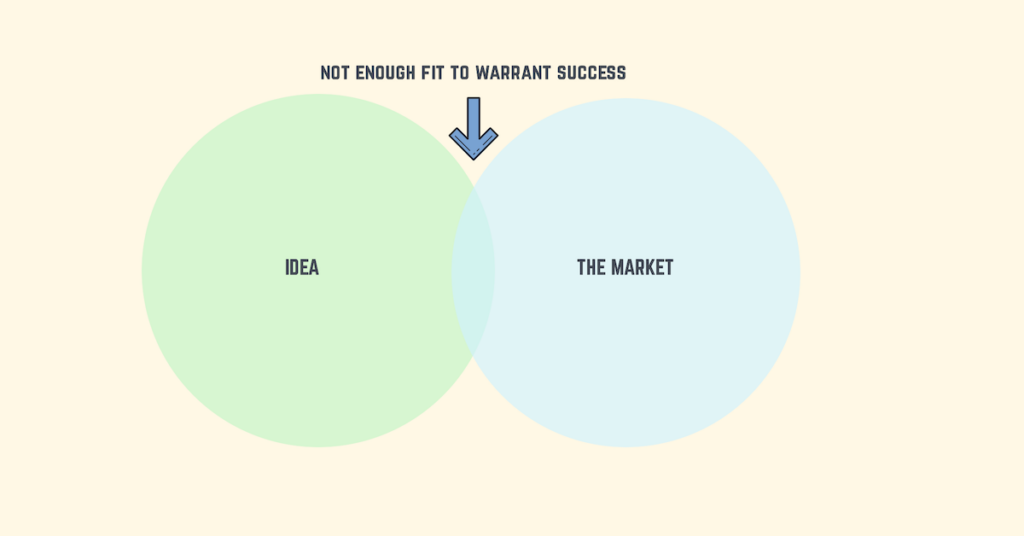
There just isn’t enough alignment between the product and customers for the founder to succeed.
Now, there could be several reasons for that – working off wrong assumptions, not listening to users’ needs, and many others.
What’s important is that in spite of all intentions to build a product for the audience, the founder built something that these people didn’t need.
With a product market fit, the same diagram would look like this:
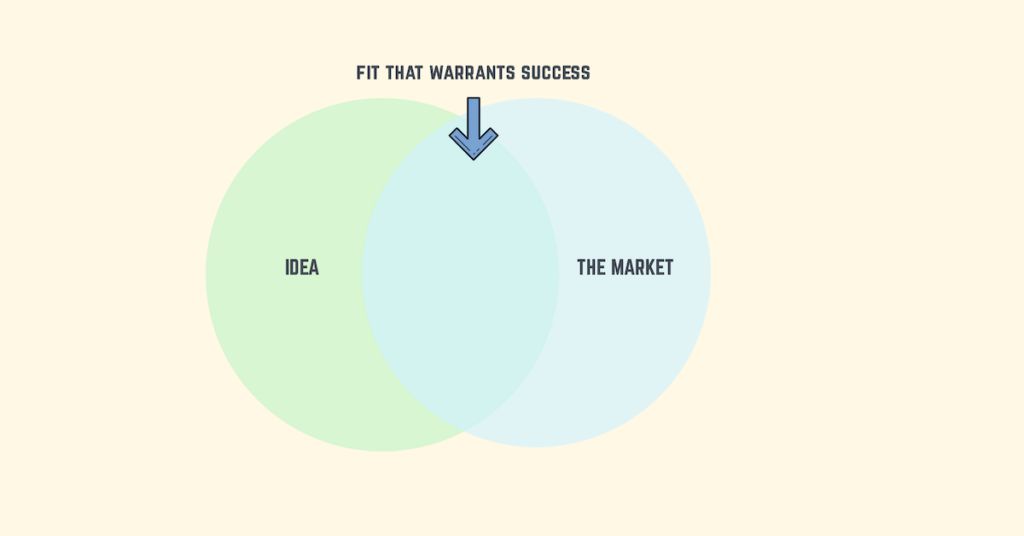
With product market fit, you know that what you’re building solves a real customer problem and that it is a problem of a large enough market to guarantee success for your product.
And let’s face it; unless you know this, you’re building something that you believe in and have hope for, but ultimately, have no clue whether it is worth doing or not.
So, what does the product market fit look like?
The simplest way to uncover product market fit is to ask customers how they would feel if the product was no longer available.
This is known as the Sean Ellis test, and it’s still considered the core benchmark for determining the product market fit.
And, as a rule, if 40% or more of customers responded that they’d be “very disappointed,” you’ve achieved product market fit.
Now, there are other questions you can include in your product market fit survey, and we’ll go through all of them very shortly.
Before that, let’s cover how you should be posing those questions to customers.
How do you collect product market fit feedback?
Evaluating product market fit is all about collecting customer feedback. And there is no better way to do that than by running product market fit surveys inside your product.
Here’s an example of an in-app product market fit survey:
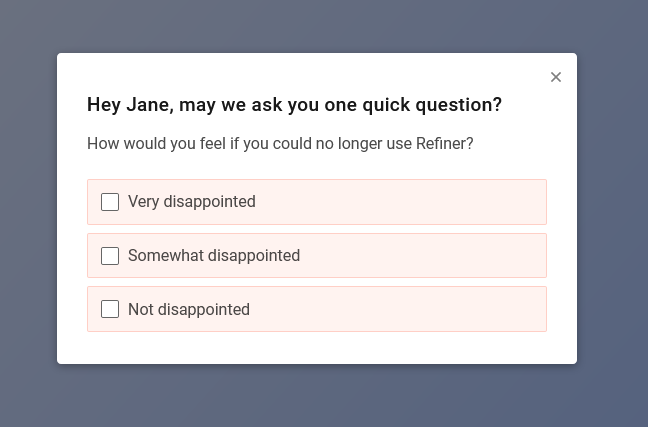
First of all, surveys are highly scalable. You can trigger the survey popup or widget at a specific moment when the person’s using your product.
You can also tailor surveys to specific user segments or display them to a particular segment only.
Finally, you have the option to design the survey to collect the most relevant information.
- You can use multiple-choice questions like what I’ve included in the example above.
- But you can also follow that up with an open-ended question that would allow a customer to provide more insights into their primary answer.
What questions to ask in a product market fit survey?
Let’s cover the most important part of this guide – Product market fit questions.
Remember – the goal for using those questions is to:
- Learn more about your current users,
- Determine how well your product delivers on their needs, and if so,
- Learn more about those people to create more relevant buyer personas.
Here are the questions that will help you do that.
The primary product market fit question
Since the main goal of running a product market fit survey is to determine whether what you’re building meets a customer need, the best way to uncover that is to ask:
“How would you feel if you could no longer use the product?”
This is considered the primary product market fit question. It’s the one proposed by Sean Ellis to help determine your customers’ attitudes toward your product.
As a rule, if 40% or more of those people reply “very disappointed,” then you’ve achieved the product market fit.
(By the way, the 40% is not a random number but a score based on research. Ellis discovered that companies who struggled with growth almost always achieved a less than 40% results from those surveys.)
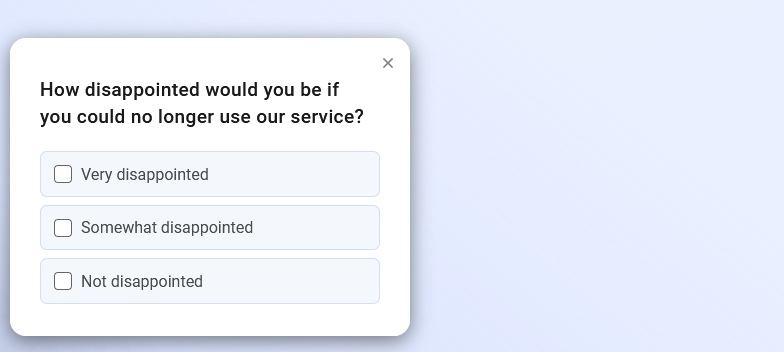
(An example of a product market fit survey created with Refiner.)
Additional questions to ask in a product market fit survey
I mentioned following up on the primary question with additional questions.
These questions help you dig a little deeper and learn more about your existing customers, their experiences, expectations, needs, and so on. Not only you can use this insight to discover how to build an even better product to suit their needs. You can also use that feedback to build highly-relevant buyer personas and know exactly whom you’re targeting with marketing campaigns.
- What challenge brought you to try out [product]?
- Tell me about the last time you experienced that challenge.
- What solutions have you previously tried?
- What didn’t you love about those solutions?
- How did you discover/come across this product?
- What would you likely use as an alternative if this product were no longer available?
- Have you recommended this product to anyone?
- What type of person do you think would benefit the most from the product?
- How could we improve the product to meet your needs better?
When to send those product market fit questions to maximize the response rate?
You know – Building a strong survey that asks the right questions is the first step in evaluating your product market fit.
But not the only one.
For one, you also need to know when to ask those questions, and that’s what we’re going to cover right now.
Because let’s face it; when is the exact time that you should be evaluating product market fit?
- Right after completing the prototype?
- Just before beta release?
- Or maybe when you launch the payment system?
All of those would work, of course. However, there are also other specific times in the product development cycle that might suggest problems with product market fit and, thus, be perfect for sending such a survey.
- One of those is when you notice a slow pace of growth. If you’ve anticipated a certain level of growth, yet for some reason, you’re still far off; it might be worth evaluating your product market fit.
- Another opportunity is when you seek funding. It might be a good idea to evaluate product-market fit to know where you are standing with it.
- Any time you significantly change or update the product. Such major changes might affect product market fit too, and it’s always a good idea to research whether that’s the case.
How Refiner helps you collect product-market fit data
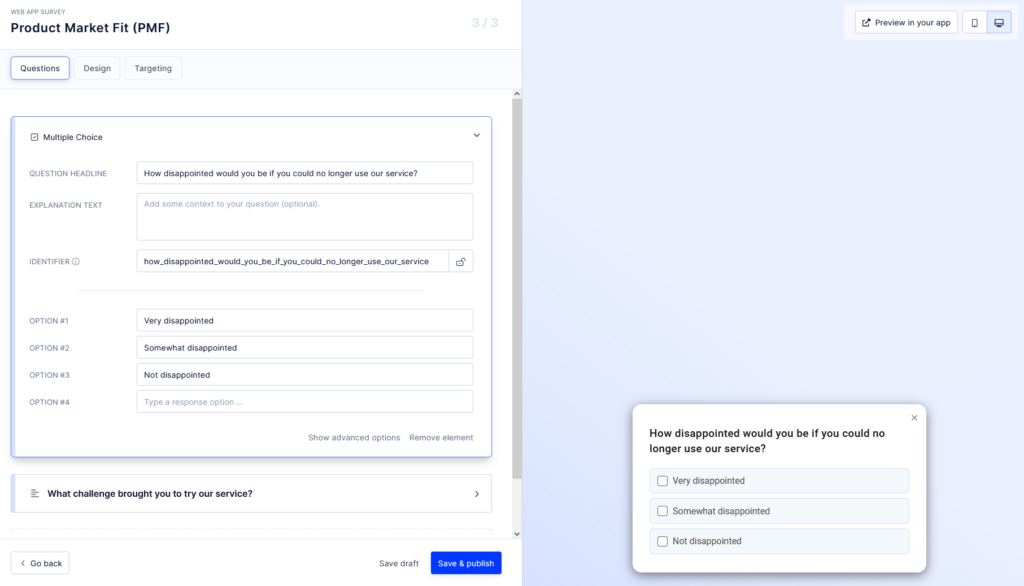
Refiner (disclaimer – this is my tool) is a customer satisfaction survey tool I built specifically for SaaS and digital products.
Founders, product managers, product owners, marketers, and growth people use Refiner to precisely target the right users at the right time with in-app and mobile surveys.
And Refiner can run a whole range of different surveys:
- Product market fit surveys
- NPS, CSAT, CES, and many other survey types.
- Customer experience surveys.
- Conduct product and user research surveys and more.
Unlike other survey solutions, Refiner focuses on “continuous feedback” campaigns for “identified users.” It’s a perfect tool to use to research ways to improve product and customer satisfaction continuously.
What’s more, every survey you send with Refiner is:
- Personalized. You can increase the response rate by using personalized survey questions and branching logic.
- Brandable. You can also customize surveys to ensure that what customers see matches your brand, product, or website.
- Contextual. You can use triggers and segments to launch the survey at the right time and to the right audience to collect even more precise feedback.





